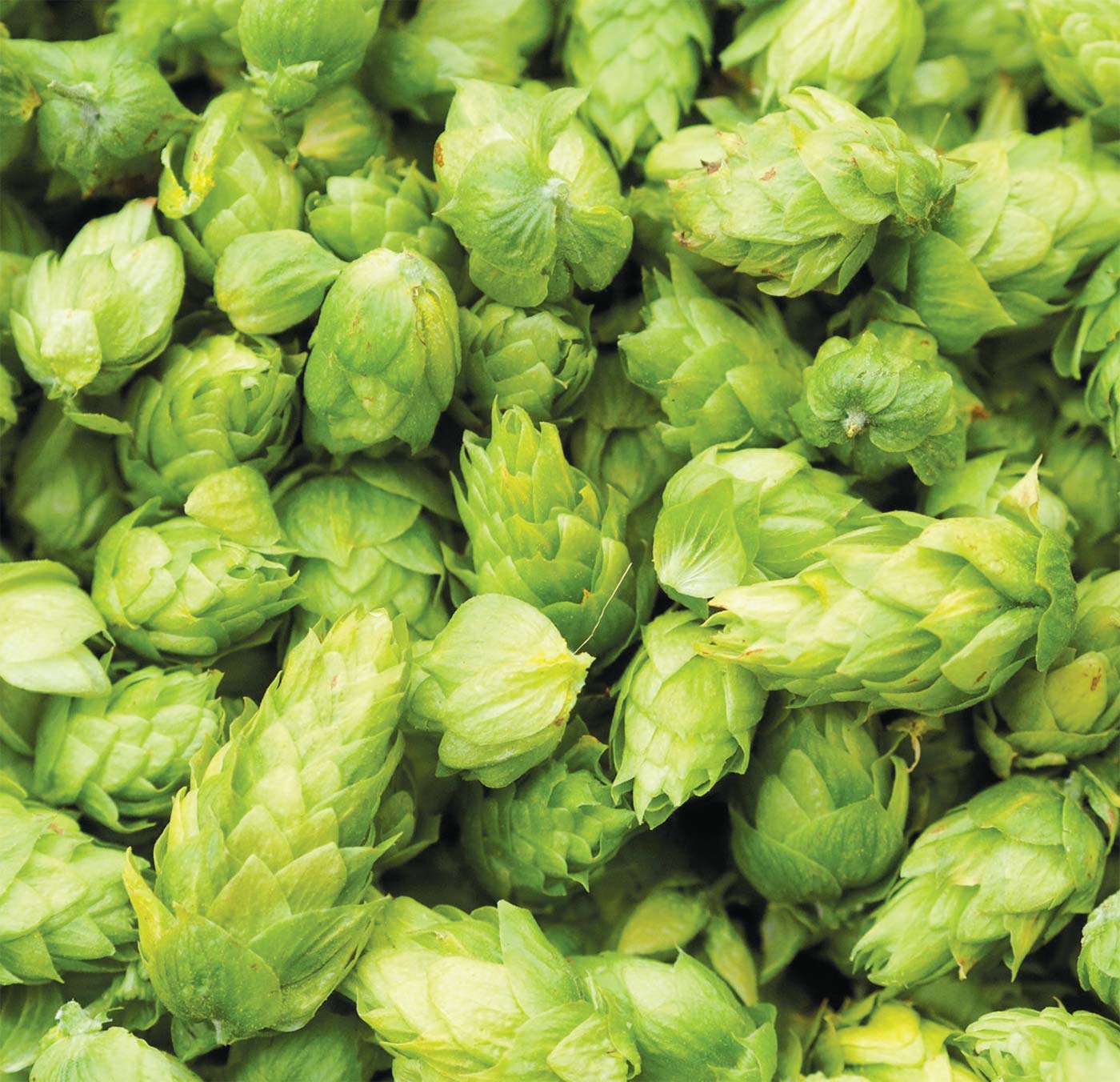Hops Crops: Craft Beer Deserves Craft Hops
“We’re never going to compete with the thousand-acre farms out west, but we are growing beautiful and abundant hops right here in the heart of New England craft beer territory.” –Max Licker
While living in Germany and spending time in the hops-growing regions of Bavaria and the Czech Republic, Champlain Valley Hops co-founder Peter Briggs noticed that the topography, climate, and latitude were similar to Vermont. That got him thinking. Why not bring hop farming back to the Green Mountains? After all, in the late 1800s, Vermont was the second largest hops-growing state, behind New York.
Peter returned to his home in Vermont and connected with Heather Darby, PhD, an agronomist who was conducting hop research at UVM Extension with a graduate assistant named Julian Post. Peter was convinced his vision was viable and ultimately invited Julian to co-found Champlain Valley Hops with him in 2017. The men purchased a former dairy farm in Starksboro, built the infrastructure (a grid of 18-foot wooden posts and wire trellising), and planted their first hops in 2018. Champlain Valley Hops currently grows about 16,500 plants on 37 acres. In 2023, the company harvested approximately 27,000 pounds of aromatic hop cones, destined for some of Vermont’s top craft beers.
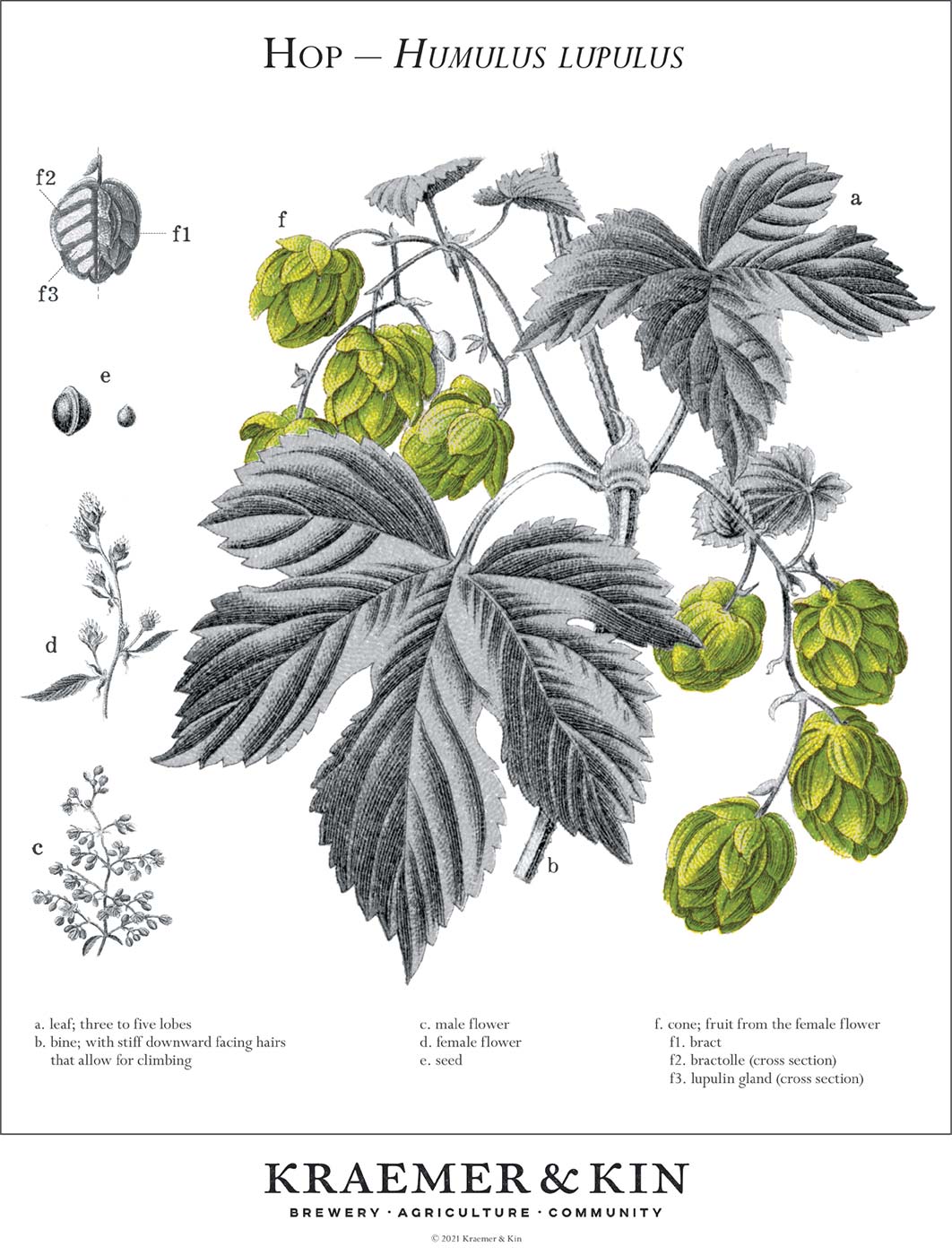
Max Licker, the farm’s general manager, shares more details. “We grow 10 varieties of hops: Cascade, Centennial, Chinook, Crystal, Comet, Magnum, Triumph, Vista, Nugget, and Willamette. Each has its own flavor profile based on the cones’ essential oils and alpha acids. Alpha acids lend bitterness to beer while the oils provide flavor and aroma. Brewers choose varieties depending on the style of beer and flavors they wish to achieve.”
Now for some stats. The United States is the top producer of hops in the world, followed by Germany. Together, they account for nearly 80 percent of global hop production. However, about 99 percent of American hops are grown in the Pacific Northwest: Washington, Oregon, and Idaho. Most of the remaining 1 percent are grown in Michigan, with an even smaller percentage grown in New York and New England. Champlain Valley Hops is the largest hop farm east of Michigan. Those mighty 37 acres in Starksboro put Vermont on the hops map!
Hops grown in Starksboro develop true Vermont terroir that distinguishes them from western hops.
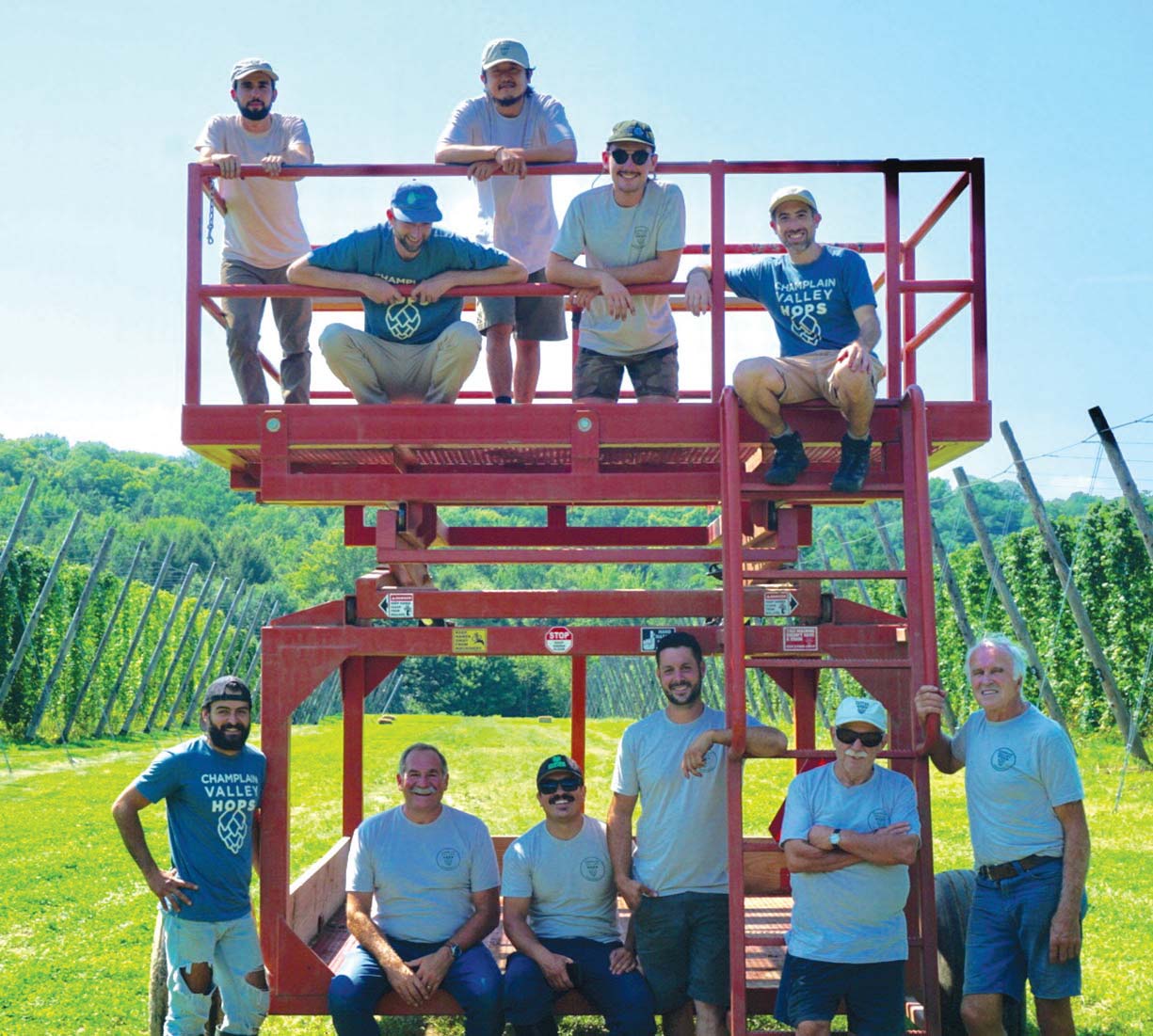
The farm crew at Champlain Valley Hops in the heart of one of the beautifully trellised hop yards
“We’re never going to compete with the thousand-acre farms out west, but we are growing beautiful and abundant hops right here in the heart of New England craft beer territory,” Max says with pride. “About 85 percent of Vermont’s breweries have brewed with our hops and our hope is that more breweries will include our hops in their core lineups. Beer, much like wine, is an agricultural product but most drinkers put little thought into where the ingredients in their brew come from. We appreciate brewers who want to have direct relationships with local farmers and pass on knowledge about our hops to their customers.” Hops grown in Starksboro develop true Vermont terroir that distinguishes them from western hops. Max taps in to his culinary background and shares some sensory attributes. “Our Chinook adds notes of ripe pineapple. Cascade is floral with a bit of pine while Centennial tends jammy and berry. Our Nugget, which is usually a bittering hop, has surprising notes of citrus, spice, and stone fruit and packs a real flavor punch.”
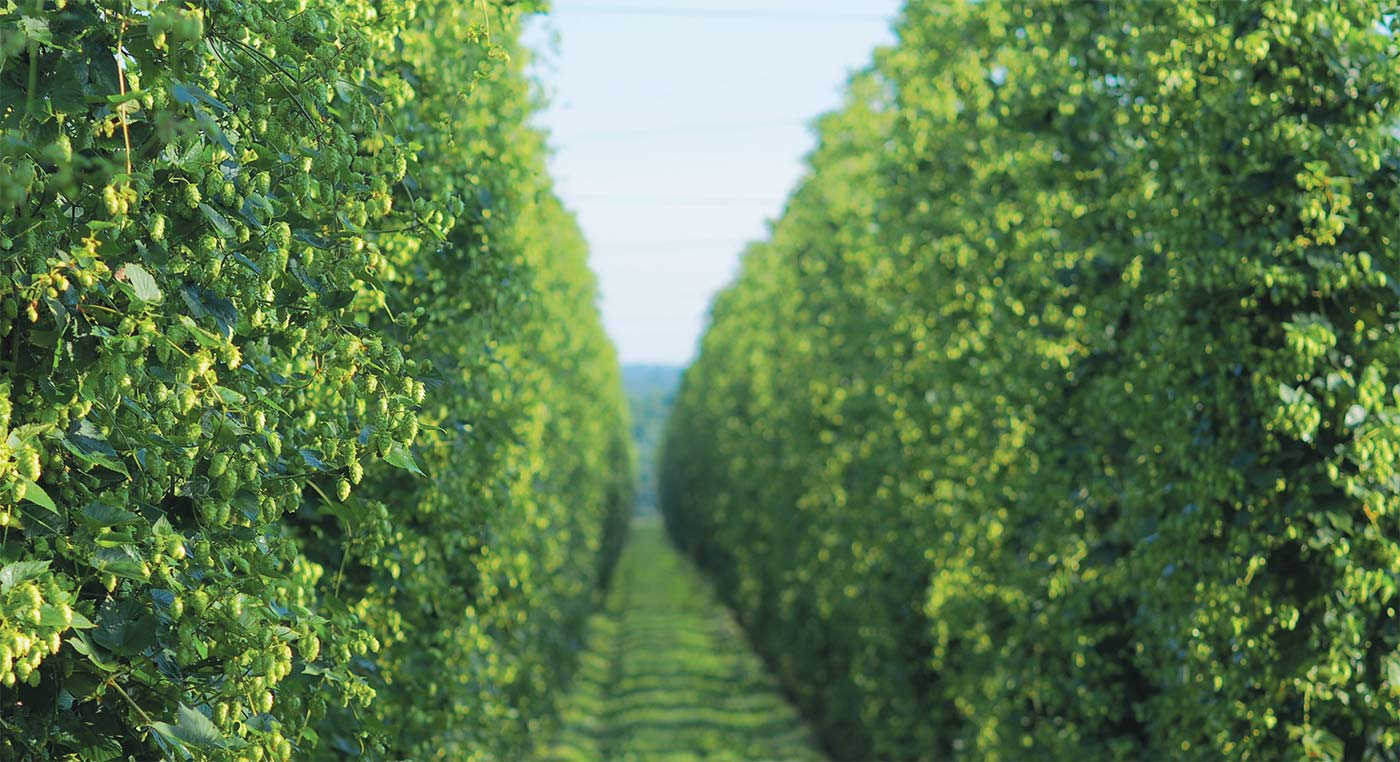
Looking down between the lush rows of loaded hop bines in late summer.
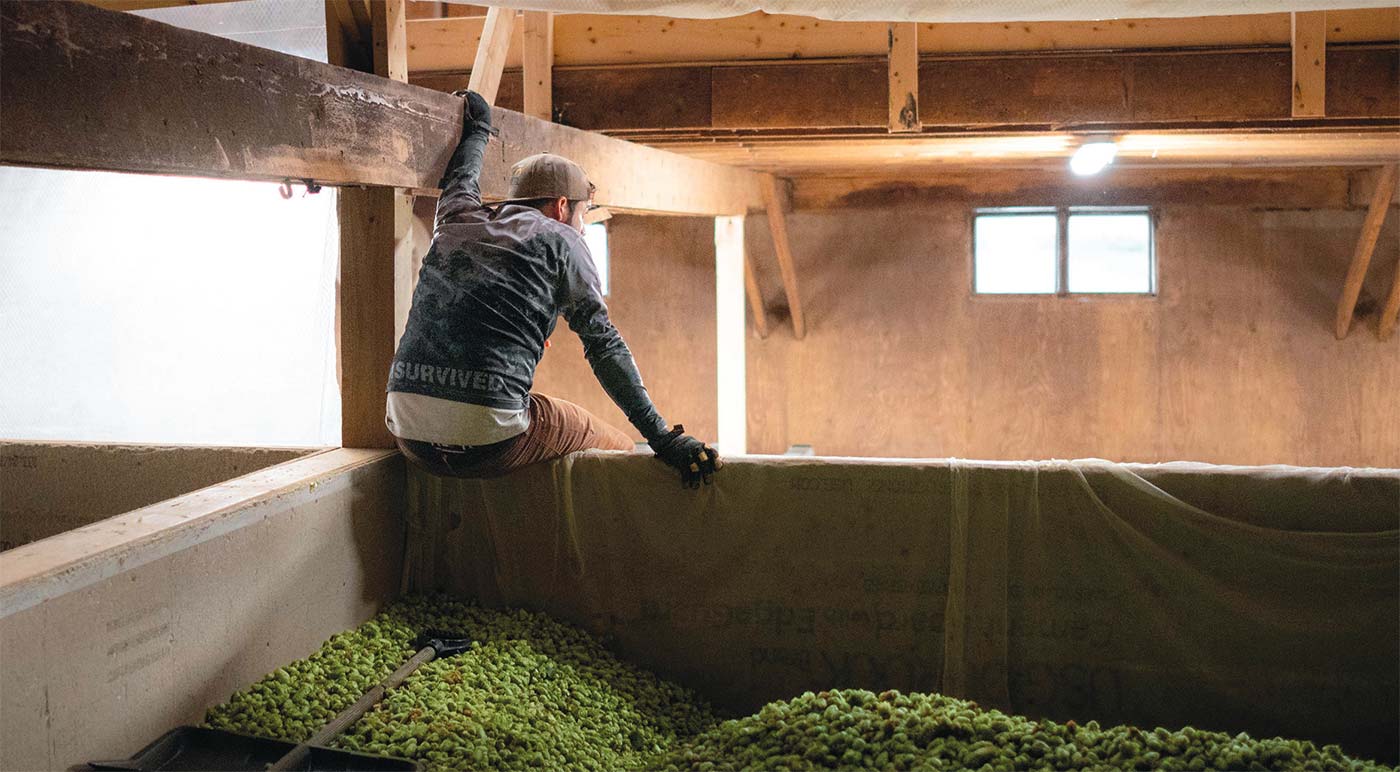
Max Licker ready to spread the next load of harvested hops cones into the drying apparatus
Growing hops takes time: three years from planting to commercial-scale harvest. Once the farm team trains the knee-high plants to the trellised strings in late May, the hardy bines (not vines) can grow more than
6 inches a day as they follow the sun. Their goal is to reach the top of the trellis by summer solstice, then focus their energy on producing cones that run the length of the bine. As the plants are harvested from mid-August through the end of September, the processing team mechanically removes the cones and dries them in specialized kilns. Swift processing is crucial to preserve their essential oils and acids. Later in the fall, those dried cones are ground into a fine powder and pelletized. Hop pellets are packed into 11-pound vacuum-sealed bags and frozen where they can remain at peak freshness for several years. Brewers add those compressed nuggets to their vessels, resulting in a beer loaded with authentic Vermont flavor.
“I’m proud that we’re fulfilling our founder’s dream of bringing hop farming back to Vermont,” Max Licker says. “There are fewer than 100 commercial-scale hop farms in the United States, so it’s pretty awesome that our brewers can have access to hops grown within driving distance of their breweries.”
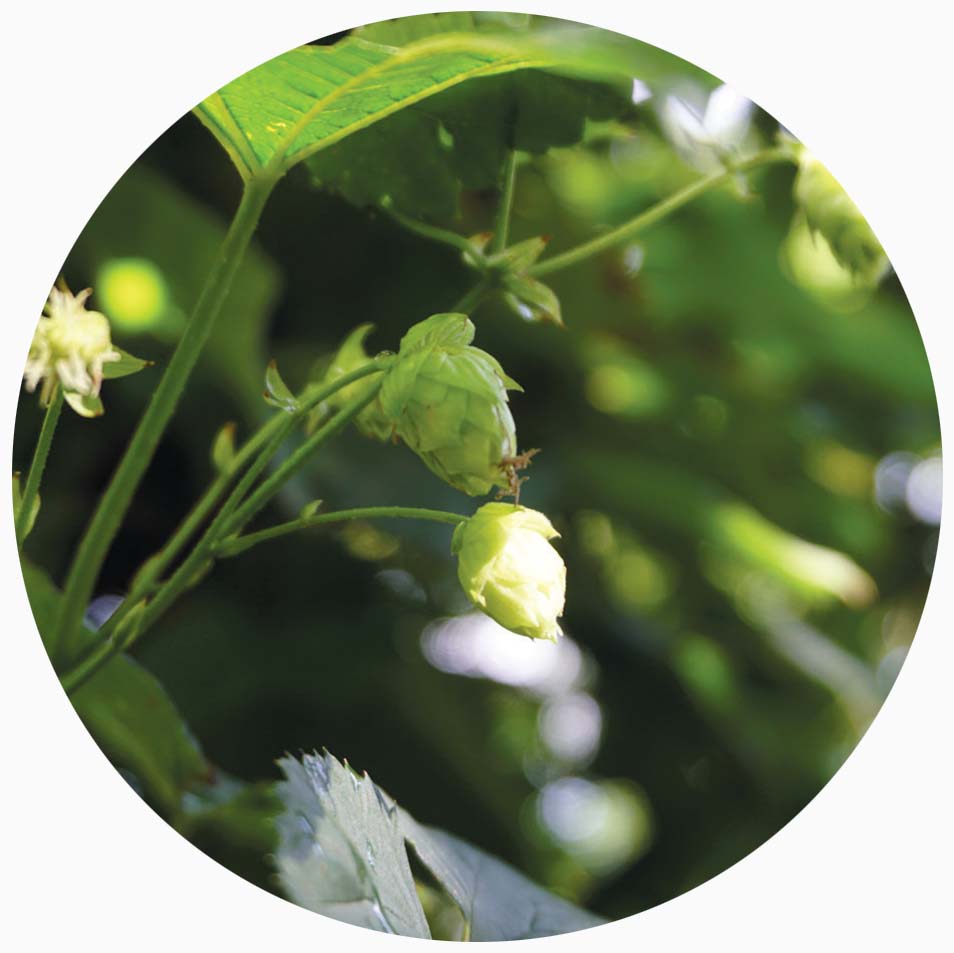
Growing hops takes time: three years from planting to commercial-scale harvest.


